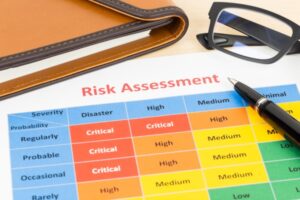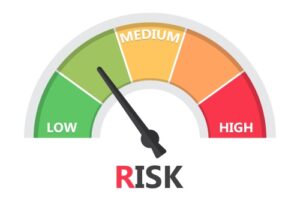How To Carry Out an AML Risk Assessment
What is an Anti Money Laundering Risk Assessment?
Do you have obligations under the Money Laundering, Terrorist Financing and Transfer of Funds (Information on the Payer) Regulations 2017 (MLR)?
 If so, you will no doubt be familiar with money laundering risk assessments. Money laundering is the term used to describe the process or act of disguising or hiding the original ownership of money that has been obtained through criminal acts such as terrorism, corruption or fraud. Regulation 18 of the MLR states that: –
If so, you will no doubt be familiar with money laundering risk assessments. Money laundering is the term used to describe the process or act of disguising or hiding the original ownership of money that has been obtained through criminal acts such as terrorism, corruption or fraud. Regulation 18 of the MLR states that: –
“a relevant person must take appropriate steps to identify and assess the risks of money laundering and terrorist financing to which its business is subject”.
A company’s size, scope and sector help to determine the types of money laundering risks posed. An assessment is carried out across the entire business to identify and record risk factors. The records must be kept up to date, unless the relevant Supervisory Authority advises otherwise in writing. In addition to legal and regulatory compliance, reasons for carrying out an AML risk assessment are: –
- To identify and analyse gaps or vulnerabilities in relation to money laundering or terrorist financing
- To protect the company’s reputation and safeguard its customers
- To implement and improve anti money laundering policies, contorls and tools
- Provide valuable management information
- To develop effective risk mitigating actions and strategies for dealing with the identified risks
- To provide guidance and support to all employees on what the risks are, how to manage them and what to look out for
- To use in the development of AML training sesssions and guidance materials
Money Laundering Risk Factors
 The AML risk assessment requirement advises that the below factors should be taken into account when considering the scope of the assessment: –
The AML risk assessment requirement advises that the below factors should be taken into account when considering the scope of the assessment: –
- The size, nature and scope of the company.
- Customers, products, services, transactions and delivery channels.
- The geo-locations and areas in which the company operates.
- Information provided by the Supervisory Authority through guidance and risk assessments.
- Information provided by the Supervisory Authority obtained from any
What Risks Do I Include in the Money Laundering Assessment?
You will notice when reading through the MLR or any published guidance that exact risks and areas to assess are not defined. This is because every business will have different risks, risk factors and vulnerabilities when it comes to money laundering. Whilst this article doesn’t provide an exhaustive AML risk list, it does give an overview of some of the essential risks to be included in your assessment.
Clients
The main area most firms start with when completing a risk assessment are their clients. For businesses such as accountants, estate agents and solicitors, clients and their transactions can be the biggest risk of financial crime. Taking a risk-based approach means assessing who your clients are, where they are located, who they are associated with and their reasons for using your services.
Your AML risk assessment should document what risk prevention controls and measures you have in place to reduce any risks associated with your clients (existing and potential). Focusing on customer behaviour is also an essential risk that should be included in your AML assessment. Consider how you would monitor unusual changes in a customers’ behaviour. Large or unusual transactions or suspicious patterns should always be monitored and reviewed.
Delivery Channels
Another key risk factor for money laundering and terrorist financing are delivery channels. Consider the way in which you deliver your products and services. Some channels can actually increase your money laundering vulnerability as they make it difficult to know who the end client is. Where business relationships, activities or transactions are carried out away from the main business, there will always be more risk involved. This could be due to using third parties such as an intermediary or services and transactions carried out online (as opposed to face to face).
In some industries, and especially in todays digital climate, it is unreasonable to expect all business activities to be carried out in person and face to face. However, such risks must be noted on the AML risk assessment alongside what actions can be taken to reduce the risk.
Market Leading AML Policy Templates & AML Document Toolkits
Know Your Compliance Limited have been providing regulatory compliance templaets, policies and manuals for nearly 10 years. We have over 6000 organisations using our documents, from the NHS and Government departments, through to major banks and universities. We have also helped thousands of SME’s and sole traders to develop and implement an effective and compliant Anti Money Laundering Program.
Whether you are just looking for a standalone AML Risk Assessment template or a complete AML Document & Training Toolkit, we can help. Fully customisable and up to date with the latest regulations and amendments, our AML templates will accelerate your anti money laundering compliance.
